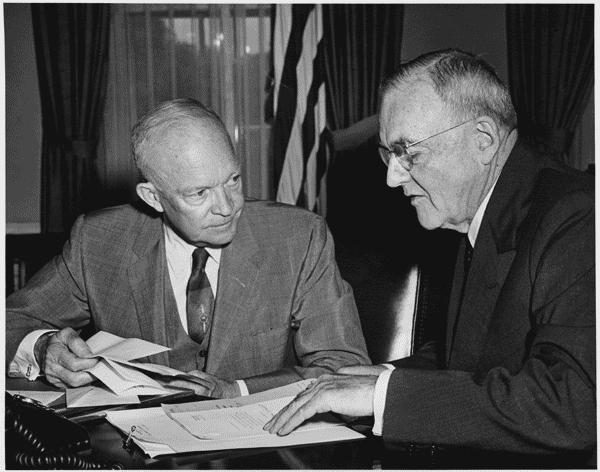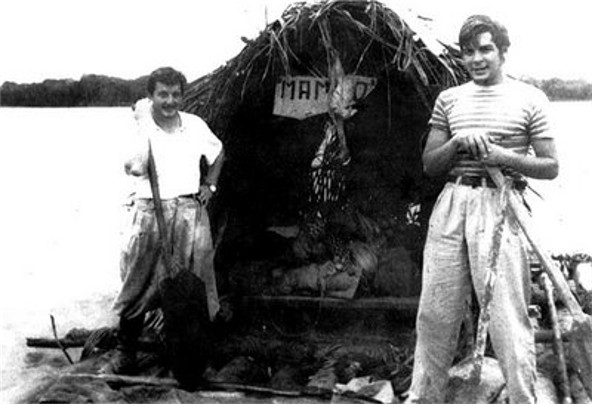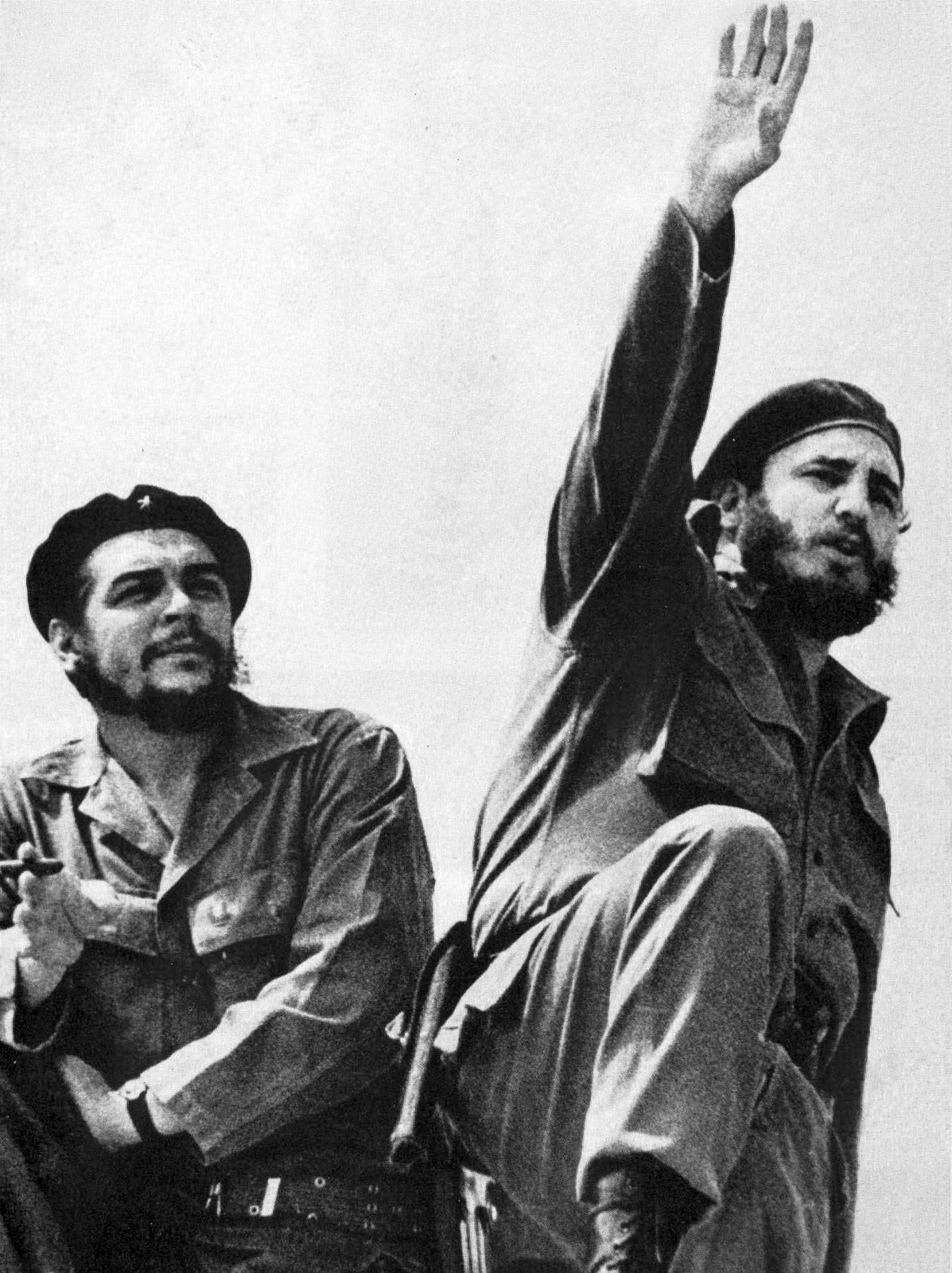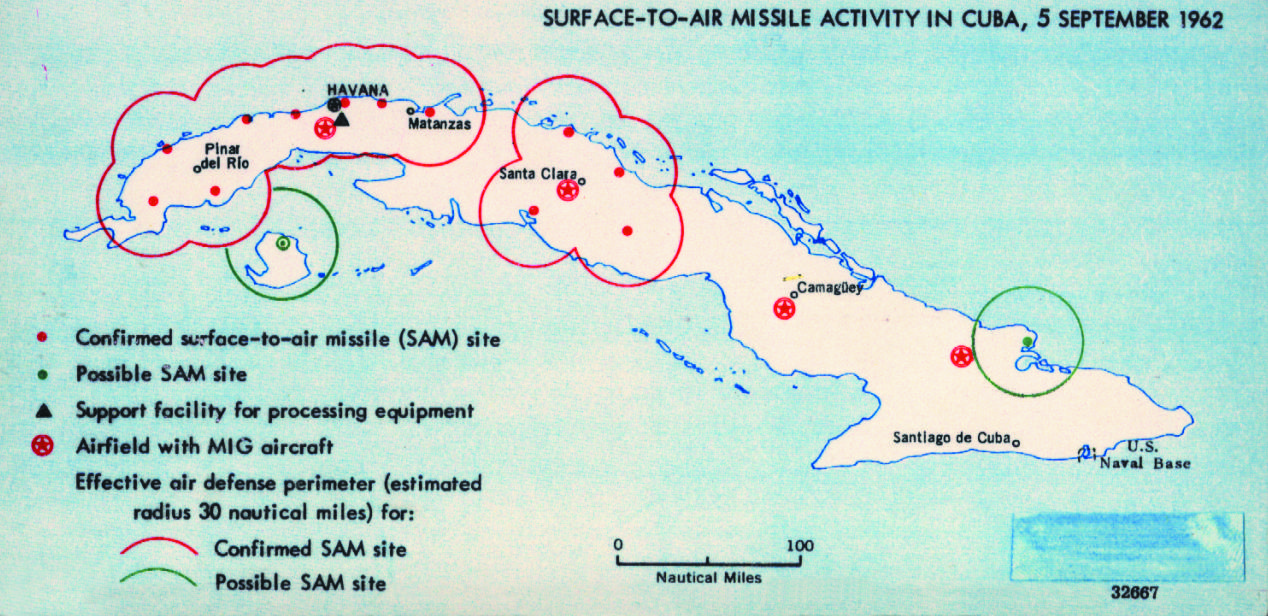18.4: Cold War and Latin America
- Page ID
- 132605
During the early 20th century, some nations like Costa Rica, Guatemala and Honduras were still thoroughly dominated by the United Fruit Company (UFC), an US corporation. After World War II, the Dulles brother (John Foster and Allen) became leaders in developing U.S. foreign policy in Latin America. The decision-making was influenced by economics and Cold World attitudes.
Guatemala
In 1954 the democratically-elected government of Guatemala planned to buy back the land from UFC and redistribute it to the poor. The Dulles brothers accused the Guatemalan government of having close ties with the Soviets and sent in the CIA to overthrow it in a military coup. Guatemalans resisted the new regime and the country fell into a civil war that lasted from 1960 to 1996 and killed up to 200,000 people.

This incident demonstrated how the outside world questioned the threats of Latin American nations. Phrases such as socialist, anti-capitalist movements were often heard when referring to these events. In many cases, the anti-capitalism expressed by Latin Americans was actually resistance to what they perceived as economic imperialism by nations like the U.S. Latin American nationalist leaders like Getúlio Vargas in Brazil (President from 1930-45 and 1951-54), Juan Perón in Argentina (President from 1946-55 and 1973-4), or Lázaro Cárdenas in Mexico (President from 1934-40), were not Marxists, or even particularly socialist in their orientation or policies.
Industrialization was a capitalist approach to reducing dependency. Nations, like Mexico, usually compensated foreign companies for the materials that they expropriated. Even when the government’s goal was something like land reform, they usually tried to compensate the former owners.
The conflict over land reform in Guatemala was misrepresented by the Dulles brothers. It was an open secret that UFC was defrauding the Guatemalan government. A truly communist government determined to eliminate capitalism would have simply claimed that UFC had acquired the lands illegally and taken them with no offer of compensation. Instead, the Guatemalan government offered UFC a price for the lands it took back based on the values claimed in the corporation’s tax filings.

Bolivia
Elsewhere in Latin America, many idealists used violence to protect the interests of corporations or justify the defenses of democracy. An example would be Ernesto “Che” Guevara, who witnessed the Bolivian Revolution of 1952 before moving on to Guatemala in 1954. Bolivia’s struggle began when the candidate of the Movimiento Nationalista Revolucionario (MNR) won the presidential election of 1951 but was prevented by the military from taking office. Victor Paz Estenssoro armed civilians and the MNR took power after 3 days and 600 casualties. He served his first term from 1952 to 1956, and accepted US financial aid in return for compensating the tin mines he nationalized. Estenssoro softened the revolution’s approach to rewriting the mineral and petroleum laws, but he did redistribute land. Bolivians approved of his leadership and he was re-elected in 1960, 1964, and 1985.
Seeing the changes in mining codes, peasants on the altiplano, the high Andean plateau around the city of Cochabamba, began seizing haciendas and dividing the land up amongst themselves. The government passed an Agrarian Reform Decree in 1953. Before the revolution, approximately 92% of Bolivia was owed by the wealthy class. Under the reform, 185,000 peasant families, about half of all rural families, received titles to an average of about 20 hectares each.
National agricultural output fell by about 10% after the land distribution, but probably because people were growing and keeping more products for home use rather than taking them to commercial or export markets. Some cities saw food shortages, but these were offset by imports and some foreign aid.
Cuba

After witnessing this revolutionary change in Bolivia, Guevara went to Guatemala and watched a similar attempt crushed by imperialist armies. This experience, and his marriage to a Peruvian Marxist economist named Hilda Gadea Acosta, radicalized Che. When he was placed on an enemies list by the new Guatemalan regime, Guevara escaped to Mexico where he met Raúl and Fidel Castro, who were in exile there following a failed revolutionary coup in Cuba.
As an ally of the Castros, he joined the revolution in 1955. Arriving in late November 1956 on the eastern tip of Cuba, the small group had their first skirmish with Fulgencio Batista's army. The survivors fled into the Sierra Maestra mountains and enlisted peasants into a guerilla army that harried the Cuban army for the next two years. In 1959, Batista fled Cuba, and Fidel Castro created a new provisional government. Though Castro had called for elections during the revolution, he postponed them indefinitely. Once he came to power, Castro implemented a communist regime and forged close ties with the Soviet Union.
The cold war was played out mostly through proxy wars: regional conflicts like the Korean War, the Vietnam War, and the Russia-Afghanistan War where the combatants were provisioned, supported, and sometimes joined by troops from the superpowers. Occasionally, the heat level increased and the U.S. and U.S.S.R. barely avoided direct conflict.
One of those times was during the Cuban Missile Crisis. The U.S.S.R. became a trading partner of Cuba after the revolution. US President Kennedy supported a CIA-sponsored plan to invade Cuba using anti-Castro Cubans in 1961, but the Bay of Pigs invasion was a fiasco. In October 1962, the U.S. discovered that the U.S.S.R. had deployed nuclear missiles in Cuba, less than 100 miles from the continental U.S. The 13-day standoff ended with the Soviet Union withdrawing its missiles in return for US promises not to try to overthrow Castro.

Guevara increasingly believed that the global north (the northern hemisphere nations) was guilty of oppressing the global south. He even criticized the U.S.S.R. for not doing enough to end imperialism, accusing Russia of forgetting Marx. Che supported the independence movements of indigenous peoples and left Cuba to try to encourage these revolutions, first in the Congo and then in Bolivia, where he was captured by CIA-assisted Bolivian government forces in 1967 and summarily executed.
Fidel Castro continued as Cuban president until 2008 when his brother Raul became President. Fidel died in 2016 and Raul handed over the Presidency in 2018. Miguel Mario Díaz-Canel Bermúdez has been the president of Cuba since 2019 and as the first secretary of the Communist Party since 2021.

Venezuela
Venezuela's territory is thought to hold at least 20% of the world's oil reserves. Beginning in the 1910s, the country’s president granted concessions to his friends to explore, drill, and refine oil. These concessions were quickly sold to foreign oil companies. In 1941, a reform government gained power and passed the Hydrocarbons Law of 1943 under which the government would receive 50% of the profits of the oil industry. The outbreak of World War II increased demand for oil, and the Venezuelan government granted a series of new concessions that were snapped up in spite of the 50% tax.
The postwar explosion of automobile ownership (especially in the U.S.) continued to drive demand, and Venezuelan production increased. Venezuela bought the Cities Service company and CITGO gas became a key export of Venezuela. In 1976, the government nationalized the oil industry. Oil was a mixed blessing for Venezuela, providing high levels of revenue to support government programs benefiting the people; but also preventing the Venezuelan industry from diversifying.
In recent decades, Venezuela used its oil revenue to pay for a wide range of social welfare programs for its people. The U.S. criticized these policies as socialist, but they were rarely done without widespread popular support in Venezuela. Hugo Chávez, who was president from 1998 to his death in 2013, criticized the U.S. government vehemently but also continued the Venezuelan policy of giving free heating oil to hundreds of thousands of poor people in the US and Europe.

